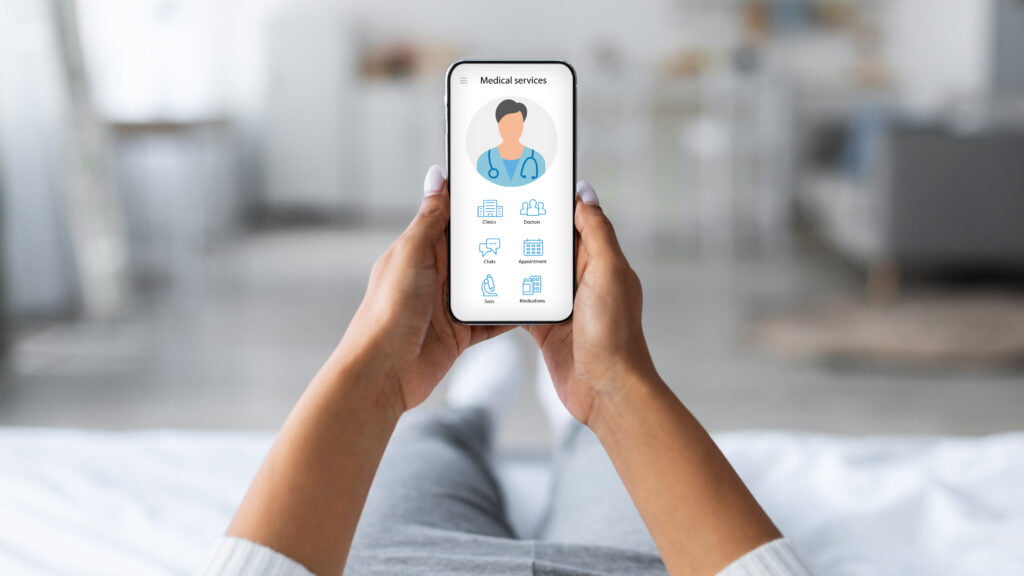How to Build a Healthcare App 2023: A Step-by-Step Guide to Success
In the digital age, healthcare apps have become indispensable tools for both patients and professionals. They offer convenience, efficiency, and a personalized approach to health management. If you’re considering building a healthcare app in 2023, this guide will walk you through the necessary steps, ensuring your platform is both functional and compliant with industry standards. Step 1 – Define Your App’s Purpose Every successful platform starts with a clear purpose and in the realm of healthcare app development, this principle holds paramount importance.Determine what problem your program aims to solve and how it will benefit its users. Think About Your Target Audience! Identifying your target audience will help tailor your app’s features and design. Whether it’s for doctors, patients, or medical students, understanding their needs…

In the digital age, healthcare apps have become indispensable tools for both patients and professionals.
They offer convenience, efficiency, and a personalized approach to health management.
If you’re considering building a healthcare app in 2023, this guide will walk you through the necessary steps, ensuring your platform is both functional and compliant with industry standards.
Step 1 – Define Your App’s Purpose
Every successful platform starts with a clear purpose and in the realm of healthcare app development, this principle holds paramount importance.Determine what problem your program aims to solve and how it will benefit its users.
Think About Your Target Audience!
Identifying your target audience will help tailor your app’s features and design. Whether it’s for doctors, patients, or medical students, understanding their needs is crucial.
For instance, a platform designed for elderly patients might prioritize accessibility features, while one for medical professionals could focus on data analytics.
Identify the Core Features
Once you’ve identified your audience, list down the core features your platform needs. This could range from appointment scheduling to medication reminders or even virtual consultations.
Features should be user-centric, ensuring they provide real value. For example, a symptom checker could be invaluable for patients, while a patient management system might be essential for doctors.
Step 2 – Design the User Interface
A user-friendly interface is key to any app’s success. Prioritize simplicity and intuitiveness in your design.
User Experience (UX)
Good UX ensures that users can navigate your program with ease. This involves logical flow, clear call-to-actions, and minimalistic design.
Always remember that a healthcare app often deals with critical information. Ensuring that users can access and understand this information without confusion is highly important
Pay Attention to Accessibility
Your platform should be accessible to everyone, including those with disabilities. This means optimizing for screen readers, providing text alternatives for images, and ensuring color contrast is sufficient.
Accessibility isn’t just a moral obligation; in many regions, it’s a legal requirement. Plus, an accessible app can reach a broader audience, increasing its potential user base.
Step 3 – Prioritize Data Security
In the healthcare industry, data breaches can have severe consequences. Ensure your program has robust security measures in place.
Encryption
All patient data should be encrypted, both in transit and at rest. This ensures that even if data is intercepted, it remains unreadable.
Encryption algorithms like AES (Advanced Encryption Standard) are industry standards. Regularly updating your encryption methods is also essential to stay ahead of potential threats.
Regular Audits
Conduct regular security audits to identify and rectify potential vulnerabilities. This proactive approach can prevent data breaches.
Consider hiring third-party services that specialize in security audits. Their expertise can provide invaluable insights into potential security flaws.
Step 4 – Testing and Feedback
Before launching, rigorously test your app. Gather feedback to make necessary improvements.
Beta Testing
Release a beta version of your platform to a select group of users. Their feedback can highlight bugs or areas of improvement.
Beta testers can provide insights that you might have overlooked. Their fresh perspective can be instrumental in refining your app.
Continuous Improvement
Even after launch, continue to gather feedback and make improvements. The healthcare industry is ever-evolving, and your platform should adapt accordingly.
Stay updated with the latest medical research and technological advancements. This ensures your app remains relevant and continues to provide value to its users.
The Bottom Line
Building a healthcare app is a significant undertaking, but with careful planning and attention to detail, it can be a game-changer in the industry. By following this step-by-step guide, you’ll be well on your way to creating a platform that stands out in the crowded healthcare market of 2023.




